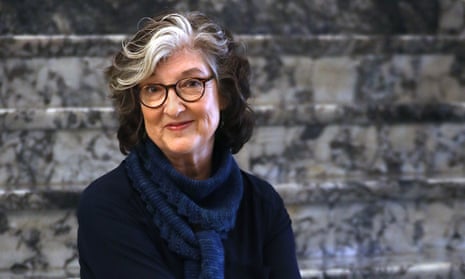
The
Books
0f my
life
Barbara Kingsolver: ‘Middlemarch is about everything, for every person, at every age’
The novelist on taking lessons from Doris Lessing, being inspired by John Steinbeck and why she can no longer read JD Salinger
Barbara Kingsolver
21 Octuber 2022
My earliest reading memory
I was four, watching my father read a newspaper. It’s the main thing I saw him do at home, read, with complete absorption. Whatever he was getting, I wanted badly. After he left, I climbed on to the sofa and stared into that newspaper, saying letters aloud. The first word that asserted itself was O-R-A-N-G-E. My brain flooded with the thrills of colour and taste. I was hooked, for ever.
My favourite book growing up
A fairytale collection called Once Upon a Time, edited by Katharine Lee Bates. It was presumed child-appropriate, but had slipped into our house from a previous era (copyright 1921) when it was OK to scare children senseless. This collection was no holds barred, with fully grotesque illustrations: two-headed giants, stolen babies. Toads and Diamonds, featuring a curse that made toads crawl out of a girl’s mouth instead of words. I credit this book with launching me into adult literature at the age of 12.
The book that changed me as a teenager
It was a play, Romeo and Juliet, in 10th grade English. Being cast as Juliet was so embarrassing, I clowned my way through. When we came to “What light through yonder window breaks … ” I grabbed someone’s class project (a Barbie dressed as Juliet) and threw her out the window. My punishment was to copy out sonnets until I was truly sorry. I did, and started falling for language, meter and Shakespeare. I’m thankful my teacher saw in me a battle to be won.
The writer who changed my mind
Doris Lessing. I read her Children of Violence novels in my late teens, and suddenly had new eyes for racism, sexism, southern Africa and my own segregated town in Kentucky. Also, new eyes for what literary fiction can be and do in the world.
The book that made me want to be a writer
John Steinbeck, Cannery Row. I’d written privately since childhood, but never imagined writing for anyone else, because I didn’t know anything important. Then in my mid-20s I read a funny, beautiful novel about an odd little scramble of not-important people. I thought: “I could try to write a book like that,” and I did. It was The Bean Trees.
The book or author I came back to
Charles Dickens. I liked him well enough as a younger reader, but didn’t appreciate his genius. The craft is so solid, you don’t see the director backstage manipulating plot and point of view. Now, as a novelist, I’m back there with him asking after every scene, “How the heck did you pull that off?”
The book I reread
George Eliot’s Middlemarch. I reread it at least once per decade, because it’s about everything, for every person, at every age.
The book I enjoyed as a teenager but could never read again
JD Salinger’s Franny and Zooey. What I know now about Salinger and young women has poisoned the well.The book I discovered later in life
Willa Cather’s My
Ántonia, which I adored. I’m not sure what put me off for so long. Maybe that impossible accent mark.
The book I am currently reading
The 1619 Project, created by Nikole Hannah-Jones. It’s shattering.
My comfort read
For long plane trips I grab a contemporary novel I can trust to be fabulous, because I’ve loved everything that author has written: Louise Erdrich, Margot Livesey, Maggie O’Farrell, Amor Towles, Russell Banks and Richard Powers, to name a few. The list is comfortingly long.

No comments:
Post a Comment